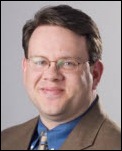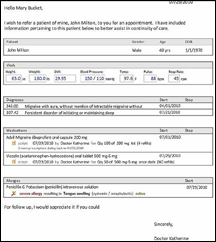Intelligent Healthcare Information Integration 8/23/10
EHR Data Sharing – No Manhattan Transfer
A recent change in working arrangements led to the need to look into the exchange of a few hundred patients’ records, from one well-known EHR system to another very prominent company’s system. To say such an exchange is easy or, especially to say it is cheap, would be the understatement of the month.
Don’t get me wrong, it is possible — in some format or another. Demographics only via .CSV or full CCR/CCD transfer of medical data are possible. But for small practices who want to share large chunks of data from one well-built system to another, it is certainly cost-prohibitive and not a simple “have your peeps call my peeps and set it up” type of deal. You’d think that by this time we might have had enough such transfers that the cost would be decreasing and the intercourse would be, well, more satisfying.
You may not be a fan of vocal jazz as put forth by “The Manhattan Transfer,” but they have been putting out some pretty silky songs for some 40 years. Their sustainability is founded upon their ability to incorporate and appropriate from many diverse styles and formats. They bring in elements from many great musical genres and meld them into their own particular musical system.
EHRs must be able to share amongst the many, many digital “genres” now fairly entrenched throughout the country and do so in a way that isn’t another bloodletting point for small practices. If not, the whole NHIN (or whatever version or flavor or name du jour it is) concept might as well be called the Big Organization EHR Information Network. Add “Group” at the end and it’s BOEING. (Hmmmm… Big government contracts, mega-corporate mindset and attitude…there’s some association there.)
Us little guys don’t have the overhead room to afford playing in the big digital sandbox if simplicity and small guy costs aren’t a part of the plan. I know, I know — healthcare data is complicated and these multi-siloed, often incompatible systems and system architectures argue against simplicity and inexpensive costs. But, you know, we let it get built that way. There’s no rule that says we can’t reengineer.
I hope so. The more I use our EHR, the more value I see within it. It has its problems, sure, but they’re far more acceptable than the hassles associated with pen and paper. It just shouldn’t make such off-key squawks when all I want is syncopation.
From the trenches…
“Beauty of style and harmony and grace and good rhythm depend on simplicity.” – Plato

Dr. Gregg Alexander, a grunt in the trenches pediatrician, directs the “Pediatric Office of the Future” exhibit for the American Academy of Pediatrics and is a member of the Professional Advisory Council for ModernMedicine.com. More of his blather…er, writings…can be found at his blog, practice web site or directly from doc@madisonpediatric.com.












The article about Pediatric Associates in CA has a nugget with a potentially outsized impact: the implication that VFC vaccines…